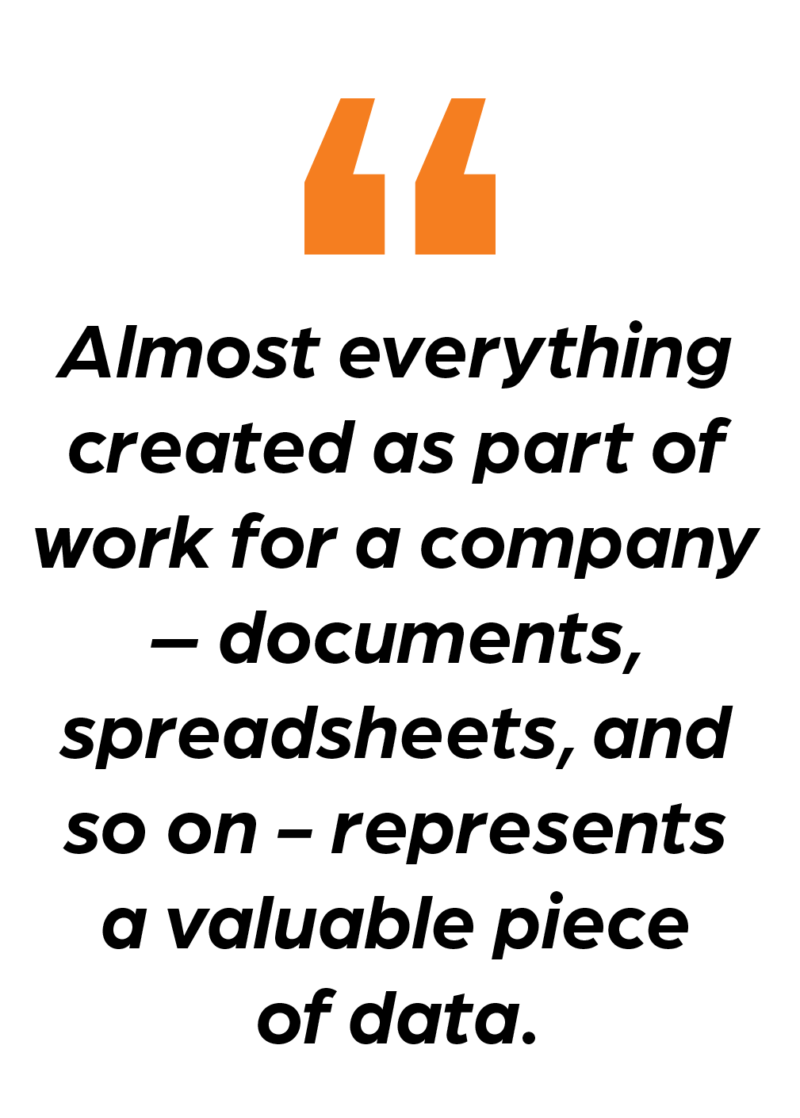What images does the word “data” evoke?
In the abstract, one might picture rows and columns filled with values. Perhaps complicated database diagrams mapping the movement of information between different systems. Maybe the data entry applications used to enter a company’s sales or timesheets come to mind. However, data does not have to look like this.
Almost everything created as part of work for a company – documents, spreadsheets, and so on – represents a valuable piece of data. Even if it does not have an entry screen or a tabular structure, every item contributing to the outcome of a project is data. Connecting these nonstandard datapoints allows deeper insights into specific projects and the functioning of the company.
For example, a company may utilize a customer relationship management (CRM) tool to enter information about a project, such as project fees and closing dates. Some CRMs have application programming interfaces (APIs) that support data extraction and loading. While valuable, this data provides only a partial view into the project. Outside of the CRM, a statement of work (SOW) document may describe the project specifics like the scope and fee estimates. A project plan spreadsheet may contain task-level details, owners, and deadlines for the project. Finally, the specifics of project execution exist in the minutiae of employee timesheets. While the CRM provides a typical data entry and extraction experience, the other items contain critical data as well.

In this example, the project will succeed because the people working on it know the relationships between these pieces of data. A person working on the project can easily open the project plan to guide their development and record notes about their work in timesheets. But, when the project finishes, the relationships can become less clear. As time goes by, people may forget the specific tasks, need time to hunt down the relevant documentation, and find it difficult to analyze the project’s highs and lows. Rather than viewing each item as part of the whole, one may just use certain items as points of reference: for instance, opening various SOWs to reference the language while drafting a future statement. Deriving additional insights would require more time and effort.
However, by treating each item as data for the project, a person can preserve the full context for more meaningful analysis. Data integrating and processing formalize the connections between the CRM entry, the SOW, the project plan, the timesheets, and the final product. If each item contains an identifier to link it back to the project and a semi-defined structure, such as clear section headings in the SOW, many options become available to extract and transform the information. Nonstandard data formats like word processor documents, images, or slide decks are not prohibitive and need not be left out as data sources. These disparate data elements can come together in the backend and form a viable dataset for analysis with a business intelligence tool.
By collecting these data points, a person can draw conclusions across projects as well. For example, a tool can automatically pull out specific project tasks that tend to take longer than estimated on the project plan to inform future planning. Common vocabulary and phrases from every SOW the company has delivered can be highlighted while drafting a new SOW to hone the language. A tool can suggest more realistic budget and labor estimates by comparing timesheet entries to the initial timeline. A single tool can leverage this data for longitudinal analysis without the need to hunt for old documents and reconstruct the relationships between every item in the project.
Ultimately, data looks like anything that contributes to the company’s operations. Breaking down the walls between these pieces of data is possible through data integrations and processing. Bringing them together enables a wider and clearer perspective of the company’s projects. Most importantly, this connected data facilitates intra-project and inter-project analytics to inform future decisions.
Author: Richard Plunkett